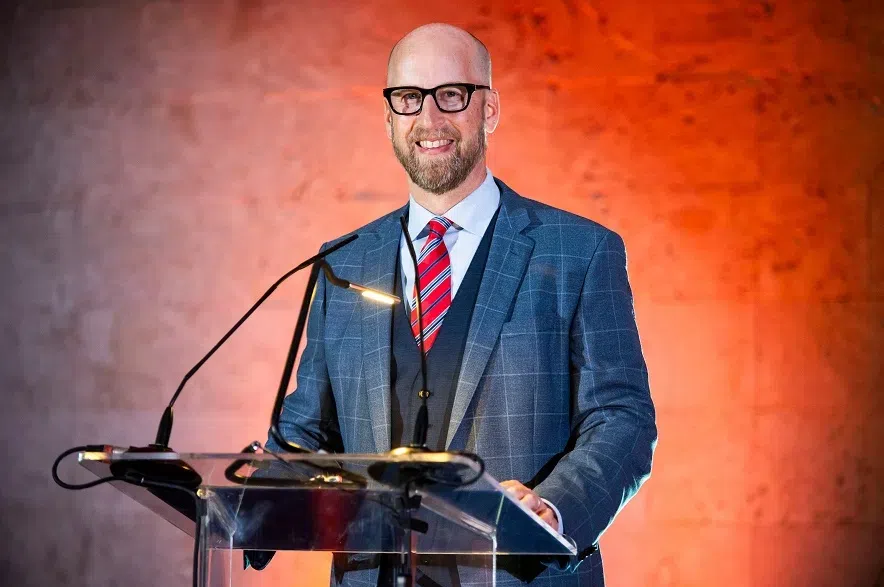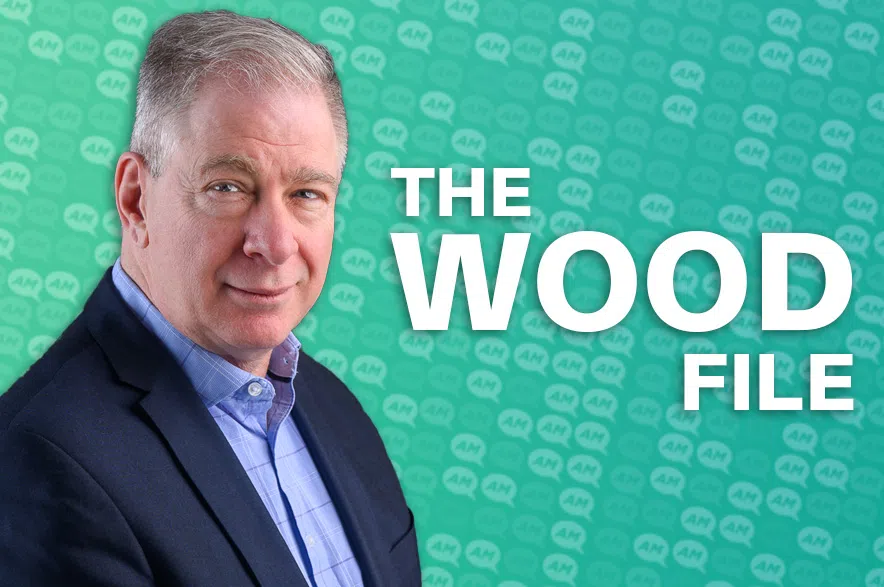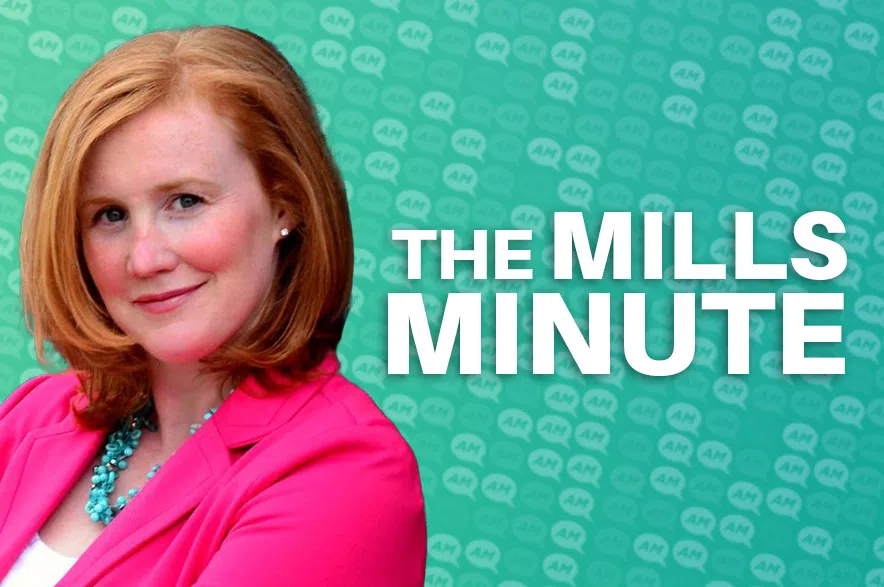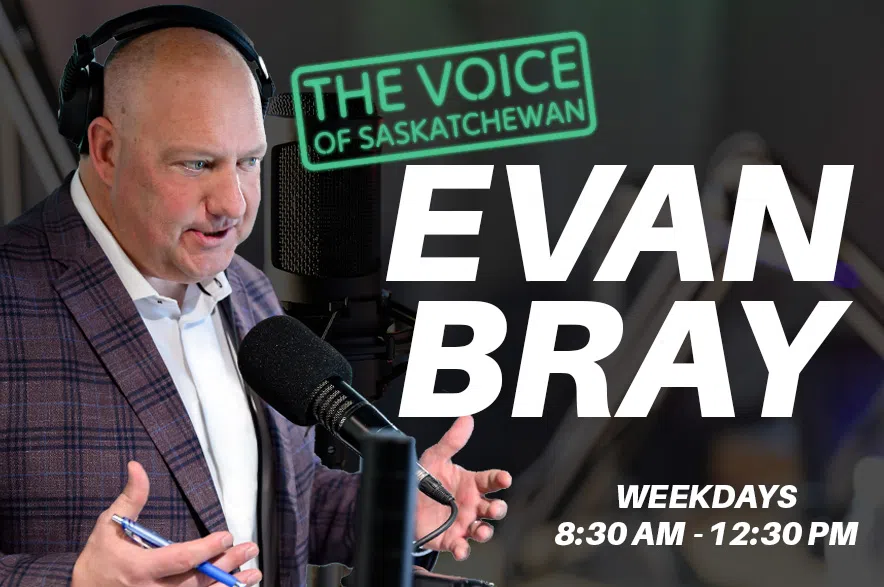The Canadian Football League is making some big changes to the size and layouts of the field, the location of the goalposts, the single-point rouge and the play clock over the next two seasons.
Commissioner Stewart Johnston made the announcement on Monday morning at a news conference, describing the changes as “a watershed moment” for the CFL. He talked about these changes on The Green Zone.
Read more:
- CFL making changes to field layouts, rouge, play clock in next two seasons
- ‘Making a great game better’: Riders CEO approves CFL changes
- ‘Disgusting, long overdue:’ Changes to the CFL drawing mixed reactions
Listen to the full interview here:
The following transcript has been edited for length and clarity.
The Green Zone: How’s your Twitter account? Have you been on social media today?
STEWART JOHNSON: I’ve chosen not to look. My kids had no idea what I was going to say today. I told them in advance over the weekend, how about you don’t go on social media on Monday and don’t look up your dad.
What were you anticipating the blowback to be?
JOHNSTON: I had some anticipation because we kept the group very small, who was working on all of this for the last number of months. I’ve now had the experience with more than a dozen folks, and we’ve taken them through the concept, and the reactions are almost uniform from die-hard CFLers, long-time CFL executives or folks who’ve worked in the league, and it’s almost the same: a huge gasp, an intake of breath, a Holy S word.
Then we walk through the reasons, the logic, the rationale and by the time we get to the end of that conversation, they have completely absorbed it, and feel these changes all make sense. Some will really struggle to get to that point, and maybe never will.
You talk about the group that you had that put together these changes. Were the changes in the same sphere of difficulty?
JOHNSTON: Well, the only people who like change are wet babies. So you’re 100 per cent right. No, I think everyone got to the logic pretty quickly. Maybe my exception will be that the 35-second clock is going to have an impact on the last three minutes of the half. I purposely did not go into detail on that because I am going to refer back to our rules committee. It’s made up of coaches and GMs and presidents and the Players Association representatives, and say, ‘Okay, let’s really look this through and the balance that we’re going to try and achieve with that is maintain the ability for our teams to come back in the last three minutes and a half or game, but also instill a sense of urgency in the way that they do a three-minute drill and drive the ball down the field.’ I feel very confident we’re going to get there. We bounced around a few good ideas right now, and we’ll announce those probably after the season.
How much is going into that where, hopefully we’re not at a buck 10 on the clock and there’s two kneel downs and it’s end of game, where, right now, it’s 40 seconds with no timeouts.
JOHNSTON: That’s exactly the balance we’re looking for. We’ve had great comebacks this season. I also want to take you to this past weekend. Hamilton went on a last-minute drive and scored a last-second field goal. They took the ball in possession with 1:12 on the clock when they kicked the field goal; it was 11 minutes later. That’s not a good a entertaining ratio. Eleven minutes to go through 1:12 of play time, and that’s what I’m talking about, urgency. We’ve got to get our players and plays moving more quickly, because that’s what our crowd expects. That’s what our fans want. We like comebacks, but I don’t need the last three minutes to take half an hour to play.
You mentioned that you had this fact-finding mission shortly after you took the job, and that you travelled around the country to get people’s opinions about the CFL. What was the impact of those conversations on what you announced today, if at all?
JOHNSTON: They did have an impact. I asked a couple of those questions casually to see what answers I’d get. But then, outside of my preconceived ideas, I wanted to hear anybody’s ideas. What do you think? What do you like? What do you think we can improve or change? And that’s why I was asking those questions. Through all of that mix, I came back to the office and said, ‘Okay, I think this is where I’d like us to focus.’
Because of the sensitivity of this type of discussion, I took a small team of experts from our football operations team, our marketing team, promotions, communications, stats, and data analytics. With that tight team, we went through the process of analysis. The more we dug in, the more we thought to ourselves, ‘Oh my God, all the data and evidence support what our instincts keep telling us, these are the right changes.’ It was a bit of a test for me to hear that feedback and solicit some of it, even though I wasn’t telling you why I was soliciting it. Here we are, five months later.
So we did have an impact on the rouge?
JOHNSTON: You did. This is all you actually. I was going to mention your names at the front.
Well, I’ve been on that for 10 years on the modification. And then you got Darrell Davis, who’s jumping up and down because he’s been wanting to move the goalpost to the back of the end zone forever. How long have you been talking about these changes?
JOHNSTON: I think my former colleagues at TSN would tell you the goal post is a long time coming.
What I didn’t talk about was the knock-on effects of moving them back, which is shortening the length of the end zone to 15, eliminating the 55-yard line so that you can get into field goal position quicker, those types of things. I think the rouge has been talked about by everybody for their entire lives, so that’s always a topic. But the play clock was absolutely something new. Since I started here, I had not put thought into the play clock until I began at the CFL.
Have you heard any feedback from the youth sports or U Sports? Because there are a lot of shared youth facilities out there. The game that we teach our kids is the game that you’re effectively changing right now. How much of an impact do you perceive these changes to have on that side of things?
JOHNSTON: I did reach out and had a great conversation with the leadership at U Sports before the press conference and at Football Canada. I took those respective groups through the thought process that you heard me talk about on stage and in the video today. By the time I got done with it, the reaction was a) an appreciation that we were having this call, and they weren’t finding out on their own at a press conference, but b) we’re here for open collaboration with this. We’re not forcing decisions on anybody. This is a professional football decision, but we want to be as collaborative as possible.
Now the second piece of your question: We share facilities, and we feel very comfortable that in the year and a half, it’s going to take for us to kind of pull all this together. We’ll have a new goal post footing. We’ll be able to move them back and forth. And guess what? It’s easy to scrub and paint fields. They change fields all the time between soccer and football.
The last part of your question was about overall amateur sport. The answer is I don’t have the answer. I don’t know what the impact is going to be. I hope that people see the benefits that we’re describing that will apply to the professional game and consider whether they will apply to the amateur game. But we’re talking about infrastructure changes. So this is an alignment to the philosophical argument and then to the economic reality of making infrastructure changes.
The Roughriders’ facility has stitched in lines. Did Craig Reynolds raise that as a concern?
JOHNSTON: We’ve had lots of discussions with each of the clubs about their fields and the state of their fields, and whether they have painted or stitched in lines. And then I’m going to punch that question over to Craig Reynolds, and you can ask him.
Some fans are upset. They want the Canadian game to be the Canadian game the way it was made 100 years ago. We’ve had season ticket holders contact us, saying I’m not renewing, because they’re making it pretty well NFL-like. How do you address those concerns from hardened CFL fans?
JOHNSTON: I love the passion of our fans, and they’ve been very protective of our game, and so I absolutely understand reactions that are like that. What I hope that group will do is think things through, from how I described it on stage today, on the benefits of these changes, and then also ask ourselves, ‘What defines Canadian football? Is it really goal posts on the goal line? Is that the definition of what makes us Canadian football?’
We are going to have a 65-yard wide field with 12 players doing motion and three downs. Our field square footage, even at 100 yards long, is going to be so much bigger than NFL size, and our end zones are going to dwarf NFL end zones, where we’re 15 yards by 65, they’re 10 yards by 53, that’s a huge difference. My vision here is that we are creating a more beautiful canva for the Canadian game to be exposed. Those athletes making those plays are going to have a better opportunity to do just that.
What do you say to the fan who thinks that it’s just inevitable that at some point this league is going to become a four-down league?
JOHNSTON: I have no plans to even consider that. The changes I made today are the changes I wanted to make, and we as a league absolutely believe will be the benefit of the CFL.
You are likely going to hear a lot from me on other types of announcements, and from there, those are going to be about trying to push our whole league and business forward, but we are not looking at other rule changes. I was asked in the press conference, ‘Can you guarantee that we will never be four downs?’ And my answer was, of course, I cannot guarantee that I will never say never to anything, because I believe we should question everything. However, that is just not on the oven at all, let alone a back burner for me.
Who’s going to be the Grey Cup halftime show this year? What are we doing in Winnipeg?
JOHNSTON: We hope to have a very exciting announcement, very soon, and I mean, very soon. So stay tuned.











